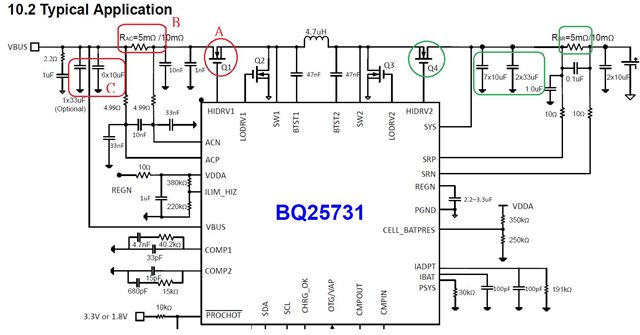Hi
I want to design with BQ25731. The input current is very small, and need the chip in the OTG output state and in Boost mode.
We hope to achieve the highest efficiency in the OTG output state.
For the above condition I want to know whether the RAC can place to C position or not.

Waiting for your reply.
Thanks
Star


